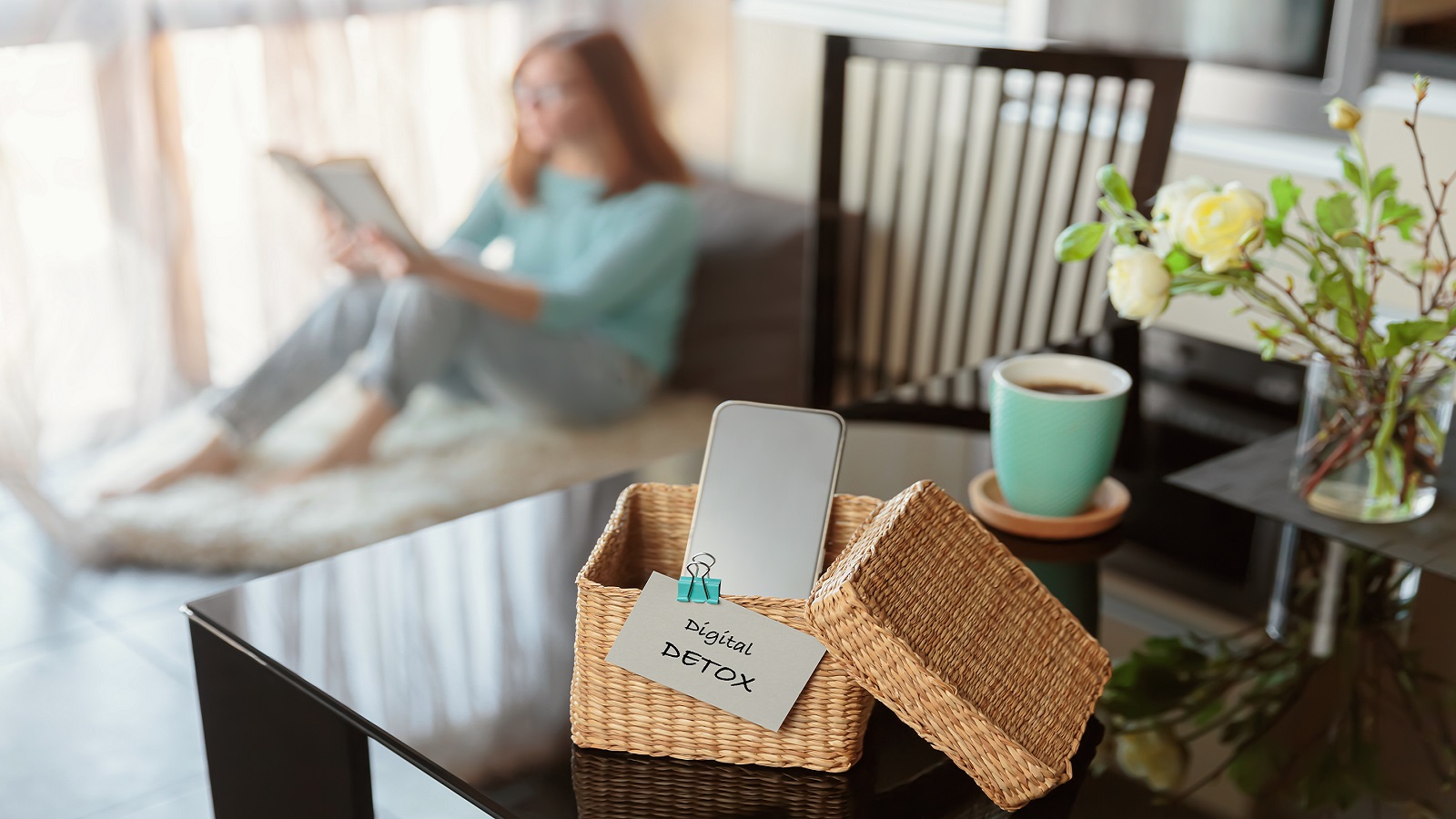How Digital Detoxing Leads to Improved Focus
Aiden Foster August 7, 2025
In today’s always-on culture, we rarely step away from our screens. From endless scrolling on social media to juggling dozens of notifications per hour, the constant stimulation of digital devices is taking a toll on our ability to focus. According to a 2024 Pew Research study, 63% of adults report feeling mentally drained by the time they log off for the day—largely due to digital overload. This has led to a growing interest in digital detoxing, not just as a wellness trend, but as a necessary practice for regaining mental clarity and focus.
The concept of digital detoxing for improved focus is no longer limited to wellness retreats or off-the-grid weekends. It’s evolving into a lifestyle strategy, backed by neuroscience, behavioral research, and real-world productivity outcomes. Whether you’re a professional feeling burned out by screen time or simply looking to sharpen your attention span, understanding how and why digital detoxing works can offer a meaningful solution.

What Is Digital Detoxing?
Digital detoxing refers to the intentional reduction or complete disconnection from digital devices such as smartphones, laptops, and social media platforms for a set period. The goal is to give the brain time to reset, improve mental bandwidth, and reestablish healthier habits around technology use.
While this might seem counterintuitive in an age where everything—from work meetings to grocery lists—happens online, the benefits of stepping back are supported by both science and experience.
Why Focus Is Fading in the Digital Era
The Science Behind Digital Distraction
- A University of California, Irvine study found that it takes an average of 23 minutes and 15 seconds to regain focus after a digital distraction.
- The constant switching between tasks and screens leads to what’s called “attention residue,” which impairs the brain’s ability to concentrate.
- Dopamine-driven feedback loops (likes, messages, comments) condition the brain to seek constant novelty, weakening our capacity for deep work.
Multitasking Is a Myth
Contrary to popular belief, multitasking doesn’t make you more efficient. A study published in the journal Cognitive Control found that only 2.5% of people can multitask effectively. For the rest of us, juggling multiple screens and tasks leads to reduced productivity, increased stress, and fragmented thinking.
Emerging Trend: Micro Detoxing Over Full Disconnection
Gone are the days when digital detoxing meant going offline for an entire weekend. A newer, more sustainable trend is micro detoxing—short, intentional breaks from screens throughout the day.
Micro Detox Methods:
- Phone-free mornings (first hour of the day)
- Email blackout hours (set times when inboxes are off-limits)
- Screen-free zones at home (e.g., bedroom or dining area)
- Scheduled “focus blocks” using techniques like Pomodoro
These small but consistent actions can dramatically improve attention span, reduce mental fatigue, and increase task completion rates.
Key Source:
Gazzaley, A., & Rosen, L. (2016). The Distracted Mind: Ancient Brains in a High-Tech World. MIT Press. This book provides foundational research on how technology affects attention and cognitive control.
Real-World Benefits of Digital Detoxing for Improved Focus
1. Better Cognitive Performance
A 2023 review in Frontiers in Psychology showed that individuals who reduced screen time by 30% over a month experienced a measurable increase in attention control and working memory.
2. Lower Stress, Better Decision-Making
By minimizing digital inputs, the brain has more resources to process important decisions and reduce cortisol levels. A University of Gothenburg study found that high mobile use was linked with increased symptoms of stress and sleep disturbances.
3. Enhanced Creativity
Creative breakthroughs often happen when the mind is at rest. Digital detoxing allows for “boredom,” which neuroscientists say is essential for creative incubation.
A Practical Guide to Digital Detoxing for Improved Focus
If you’re ready to reset your digital habits, here’s a simple guide to get started:
1: Conduct a Screen Audit
Use apps like Screen Time (iOS) or Digital Wellbeing (Android) to identify where your time goes.
2: Define Your Detox Goals
- Reduce screen time by 2 hours/day
- Eliminate social media use after 9 PM
- Implement 20-minute device-free work sprints
3: Choose Your Detox Format
- Full detox (one full day offline)
- Workday detox (focus on reducing digital distractions during office hours)
- Hybrid detox (daily micro-breaks + one offline weekend per month)
4: Replace, Don’t Just Remove
Use the time gained for analog activities:
- Read a book
- Take a walk
- Journal or meditate
Step 5: Track Progress & Adjust
Measure focus levels by noting task completion rates, attention span, and mood across the week.
Tech Tools That Support a Digital Detox
Interestingly, some tech can assist in your detox journey:
- Forest App: Encourages focused time by growing a virtual tree as you stay off your phone.
- Freedom: Blocks distracting websites and apps across all your devices.
- One Sec: Adds a forced pause before opening certain apps like Instagram, helping reduce impulsive use.
These tools use intentional design to reduce mindless scrolling and encourage conscious usage patterns.
Integrating Digital Detox Into Long-Term Lifestyle
Making digital detoxing part of your ongoing lifestyle—not just a quick fix—can yield lasting benefits.
- Set Tech Boundaries: Turn off non-essential notifications and limit app usage with time caps.
- Build Screen-Free Rituals: Examples include analog hobbies or having device-free meals.
- Model Digital Wellness: If you’re in a leadership or parenting role, demonstrating healthy tech habits sets the tone for others.
The result isn’t just better focus—it’s a more mindful, less reactive way of living.
Final Thought
In a world where attention is constantly under siege, practicing digital detoxing is less about restriction and more about intentionality. By taking regular breaks from screens, we allow our minds to reset, improve our capacity to focus, and rediscover the joy of being fully present. Whether through daily micro detoxes or weekly screen-free rituals, the shift toward digital balance is one that benefits not just productivity—but overall well-being.
References
- Stothart, C., Mitchum, A., & Yehnert, C. (2015). The attentional cost of receiving a cell phone notification. Journal of Experimental Psychology: Human Perception and Performance, 41(4), 893–897. Available at: https://psycnet.apa.org (Accessed: 7 August 2025).
- Thomée, S., Härenstam, A., & Hagberg, M. (2011). Mobile phone use and stress, sleep disturbances, and symptoms of depression among young adults: A prospective cohort study. BMC Public Health, 11, 66. Available at: https://bmcpublichealth.biomedcentral.com (Accessed: 7 August 2025).
- Wilmer, H. H., Sherman, L. E., & Chein, J. M. (2017). Smartphones and cognition: A review of research exploring the links between mobile technology habits and cognitive functioning. Frontiers in Psychology, 8, 605. Available at: https://bmcpublichealth.biomedcentral.com
(Accessed: 7 August 2025).







